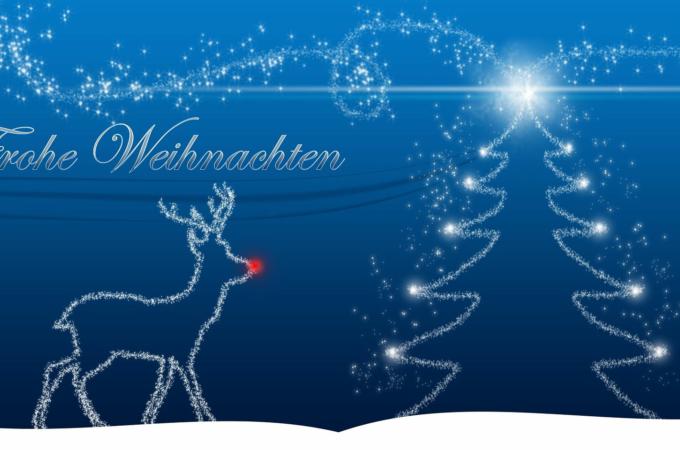In Praise of Rudolph et al.
Deploring the commercialization, secularization, and general thinning-out of the spiritual meaning of Christmas is part of the stock in trade of commentators on things religious of whom your humble servant is one. Nor should we fail to mention those annual church-state battles in the season of good will over whether Nativity scenes should or shouldn't be allowed on public property.
Now, believe me, I deplore commercialization, secularization, and thinning-out as much as anybody. I groan when the blizzard of Christmas catalogs starts in September and sigh at hearing tacky Christmas jingles piped into restaurants and shops and buses before Thanksgiving.
But lately I confess I've been having kinder second thoughts about the seasonal deluge of secular schlock. Let me explain.
A few days ago I was sitting in a busy lobby, waiting for transportation and passing time by contemplating a ceiling-high, lavishly decorated Christmas tree a few feet away. The gew-gaws and tinsel hung so thickly that in many places the tree's green plastic needles could scarcely be seen. As for the ornaments, they tended to the neo-pagan. No glimpse anywhere of anything the least bit religious, unless your religion happens to be Druidism.
Looking up, almost at treetop I saw gaping vacantly down at me a moose--stand-in for a reindeer, I suppose--garbed in a bright red Santa tunic and wearing between its horns a floppy red Santa hat. "How dreadful," I thought in my best deploring mode. "What a travesty of Christmas!" And so I suppose it was.
Then my eye strayed past Santa-Moose to the peak of the tree, and, presiding over everything else, I saw a giant, glitter-crusted Star. And as I looked at it, I suddenly thought, "No star without the stable, no stable without the manger, and no manger without the Child. For those with eyes to see, maybe Christmas is here after all."
Then I remembered something I'd heard a wise old priest say--something like this: "I don't mind all the glitz and the seasonal commercials and the bad music and the rest. Because it seems to me that once in a while it moves people to stop and ask themselves, 'Why are we doing all this?' And when they ask themselves that, they can hardly avoid the answer: 'We're doing it to celebrate the birthday of Jesus Christ.' And if Rudolph the Reindeer gets just a few people to remember that, then I say good for Rudolph."
And also for Santa Claus and the Grinch and catalogs in July and tacky jingles. Bring them on! Almost despite themselves, these are sign-posts pointing--just as the Star did--to the meaning of Christmas. And that is very good indeed.
But let me close with something I quote for no better reason than that it celebrates Christmas with marvelously touching tenderness. It's a Christmas prayer written early in the 12th century by St. Bernard of Clairvaux:
"Let your goodness, Lord, appear to us, that we, made in your image, may conform ourselves to it. In our own strength we cannot image your majesty, power and wonder; nor is it fitting for us to try. But your mercy reaches from the heavens, through the clouds, to the earth below. You have come to us as a small child, but you have brought us the greatest of all gifts, the gift of your eternal love. Caress us with your tiny hands, embrace us with your tiny arms, and pierce our hearts with your soft, sweet cries."
Merry Christmas.
- Russell Shaw is the author of more than twenty books. He is a consultor of the Pontifical Council for Social Communications and served as communications director for the U.S. Bishops.



















